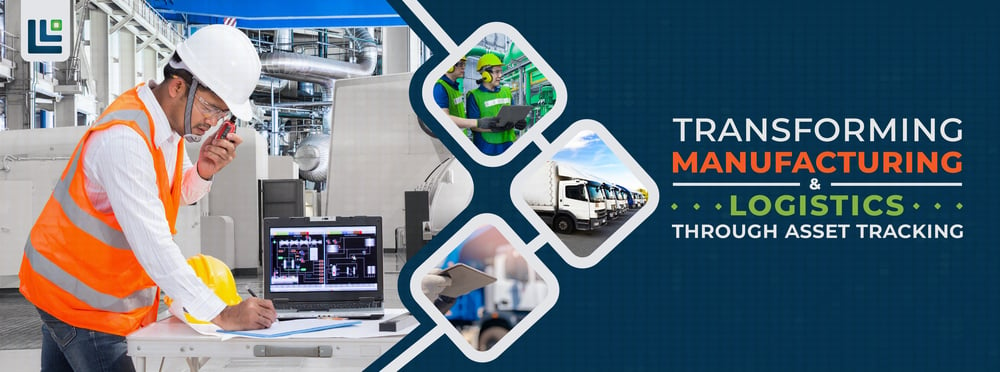The fourth industrial revolution has been impacting organizations worldwide since 2011. While Industry 4.0 is not something most are unfamiliar with, not all people understand just how impactful it’s been and how significant the impact will continue to be. Industry 4.0 hasn’t just impacted the way manufacturers perform processes; it’s completely optimized organizations at every level.
What is the Fourth Industrial Revolution?
Industry 4.0 represents the most recent stage of the industrial revolution. This stage has focused heavily on automation, interconnectivity, and real-time visibility. The use of technology in organizations allows all processes to be enhanced to improve the company's performance. Like each industrial revolution that has come before, Industry 4.0 enhances the way processes work in manufacturing plants. From speeding up production processes to improving product quality, the fourth industrial revolution is helping companies in ways unimaginable.
Why is Industry 4.0 Important for Businesses?
Each aspect of Industry 4.0 impacts manufacturers differently. They each serve a different purpose, but all work together to ensure the organization is as optimized as possible.
Automation
Automation in manufacturing plants refers to the technology used to minimize the amount of human labor used to complete processes. At an extreme level, this looks like a plant made up of robots completing the production process from beginning to end. At a more realistic level, automation is used for repetitive, tedious tasks. An example that’s been around for a while is a conveyor belt taking unfinished inventory from one workstation to the next. This advancement saved employees a little extra time each day they would usually spend walking the material to the next person.
Reducing human labor is helpful for a couple reasons. The first one being time optimization. Each employee in a manufacturing plant has set hours they work each day to complete the production of their products. The more parts of the process can be automated, the more time workers have to focus on the job they were hired to perform. Reducing human labor also means there will be less human error. Humans can try hard to eliminate error, but it will never truly go away. Part of human nature is making mistakes. Automating a process means there’s no human to make any mistakes.
Interconnectivity
Interconnection refers to the way technology and people can communicate through the internet of things (IoT). Interconnectivity means that even though you’re not monitoring the production process in person, you can still see what’s going on, so you know where adjustments need to be made. Interconnection ties into real-time visibility, so let’s continue to break it down.
Real-Time Visibility
Having real-time visibility is one of the most important things you can have in your manufacturing plant. Historical data is great to have when planning for the future, but with how quickly things change, having the most current data will give you the best information possible so you can make decisions based on the most accurate data. IoT technology can be used to create a system that provides real-time data and visibility no matter where you are. For example, asset tracking can monitor how efficient your production process is and where any bottlenecks are. With asset tracking, a manager doesn’t have to time each workstation manually to determine efficiency; they can look at the system’s UI and reports to evaluate which workstations are performing well and which ones need some work.
Increase Your ROI by Investing in AirFinder OnSite
- Low Cost. AirFinder OnSite XLE is a fraction of the cost of competitors' pricing.
- Long Battery Life. XLE lasts up to 7 years with hundreds of location updates daily.
- Increased Efficiency. Spend less time looking for assets, and more time being productive.
What Does the Future of Industry 4.0 Hold?
This year, industry experts are predicting Industry 4.0 to really take off. Companies are always looking for ways to improve overall efficiencies, typically by shortening production cycles and eliminating problems. For years, companies have been addressing problems after they’ve occurred. Having a reactive strategy turned out to be hurting companies more than helping them. Companies are now switching from a reactive strategy to a proactive strategy. Preventing issues saves companies time and money.
When companies gain full visibility of all of their processes, they are able to make real-time decisions based on reliable information. They won’t have to wait for historical data to be available to make a decision. When companies take proactive steps to prevent problems, they won’t have to break the bank trying to fix the problem quickly. For example, if a machine breaks down because the proper maintenance wasn’t completed, time will be wasted since the machine can’t be used, and a large amount of money will have to be spent fixing or replacing the machine. Visibility into the status of machinery can help managers eliminate maintenance related issues and make sure production numbers are hit.
Are You Ready For the Future?
Automation, interconnectivity, and real-time visibility are only just a part of Industry 4.0 as a whole. Other industry 4.0 technologies like artificial intelligence (AI), machine learning (ML), and the cloud continue to drive the future of Industry 4.0.
Even though the fourth industrial revolution started just over a decade ago, it’s not going anywhere any time soon. It truly is the future of manufacturing, and if you haven’t gotten on board yet, you better before you fall too far behind. The best way to get involved is to invest in asset tracking. Tracking your assets with technology provides real-time visibility and automates parts of your production process. It provides all the benefits listed above, and its abilities are continuing to grow. For more information on Industry 4.0 and how asset tracking fits in, book a demo with our team of experts.





